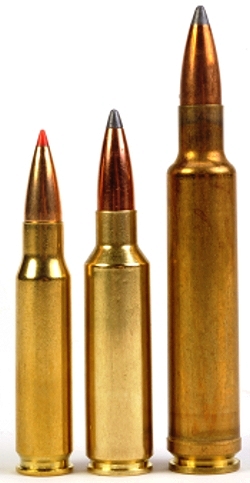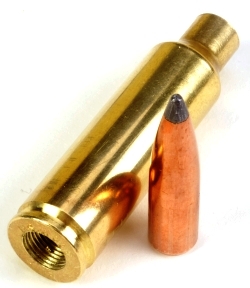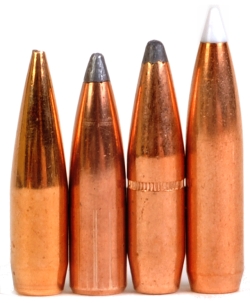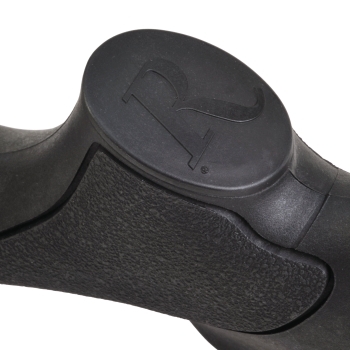 I did not immerse myself in all things 300 Winchester Short Magnum when that cartridge was originally introduced. I was busy that week and otherwise caught up in an opposing ballistic revelation involving giant cartridge cases, mountains of smokeless power and bullets individually weighed in pound plus increments. It was a dark, Weatherby kind of period in my life… one I rarely talk about. I was a recoil junky in search of deafening muzzle blast, burning up stainless steel barrels and detaching retinas like there was no tomorrow. Close in shooting meant 300 yards and a carbine was any gun with a barrel shorter than 28″.
I did not immerse myself in all things 300 Winchester Short Magnum when that cartridge was originally introduced. I was busy that week and otherwise caught up in an opposing ballistic revelation involving giant cartridge cases, mountains of smokeless power and bullets individually weighed in pound plus increments. It was a dark, Weatherby kind of period in my life… one I rarely talk about. I was a recoil junky in search of deafening muzzle blast, burning up stainless steel barrels and detaching retinas like there was no tomorrow. Close in shooting meant 300 yards and a carbine was any gun with a barrel shorter than 28″.
The 300 WSM came about like the Ducky Boys in the movie “The Wanderers”; one day it was just there. The presence of the Ducky Boys has been explained as representation of a turn of the century New York City gang, but I think they were an abstract and represented inevitability. By the end of the movie, they were unstoppable and they overran all that came before them. Now, ten years after the… WSM intrusion, and after the market place has shaken off the WSM derivatives that couldn’t be commercially justified, I thought it would be a good time for “Change at Warp Speed Joe”, to take a look at this smaller, kinder magnum and a rifle that suits its purposes.
The Remington Model 700 Special Purpose Synthetic
In case you are a fancy lad, and hunt only mongoose and musk ox with a fine side by side double from the empire… British, not the one that strikes back, the rifle pictured to the left is what the rest of us call a hunting rifle. A term which requires no air bunnies. The Remington is 6 pounds 11 ounces of durable, drag it through the woods, black on black short magnum that allows its owner to focus on hunting rather than preserving the finish on his hunting rifle.
I am not suggesting the SPS is an unattractive firearm. The SPS is an all business firearm that will blend into a hunting environment, not reflect light and wipe off easily after seeing hard use in the field. That’s a gun I can respect and appreciate. At $639 MSRP, in chambers up through the 300 Ultra Mag, the SPS has all of the design and strength features of the Model 700, including a Super Cell recoil pad sling swivel studs, but all with a matte rather than reflective finish. The stock is has good geometry and provides the right support, in the right places and does a good job of diffusing recoil. even if its rigid surface, as found on most synthetics, doesn’t provide optimal tactile comfort. The stippled grip panels will keep the gun securely in a hunter’s hands during any type of weather.
If a picture is worth 1,000 words, why does it take that many to explain them?

Above Left – The Remington has a hinged floorplate to facilitate unloading. All of the bottom metal, trigger guard to floorplate is made of aluminum, the follower is steel. The securing hardware reflects the current trend in firearm hex head fasteners, another nail in the coffin of cross slot fasteners the world over. Ever try to remove a head fastener with a dime or quarter? I know, “What’s a dime or quarter?”. Inside the trigger guard are the little releases for the floor plate and trigger guard, the hex fastener in the trigger indicated it is a very substantial and very slick Pro-X fully adjustable unit. The ejection port is short – WSM short. Above Right – The matte black theme carries over. A positive two position safety, the receiver is, of course, drilled and tapped for scope mounting.

|
||||||||||||||||||||||||||||||||||||
The Remington Model 700 SPS has a cheekpiece for support, a straight comb and a minimal drop at the heel, about 5/8″. I miss the Monte Carlo and roll over cheek pieces about as much as I miss Disco. The Remington’s forearm is narrow at 1 1/2″, but sporting rifle comfortable, and easy to grab with a gloved hand. As I said previously, it is a hunting rifle. Don’t make me say the rifle is built with Remington’s three rings of steel… OK, I will and it is. Case head coverage and proper gas venting is more than a statement in a brochure, especially if you’re a handloader.
One of these days I will publish my instrumented pressure failure analysis data and detail that came from some tests we did on Remington, Weatherby and Winchester firearms. Put enough pressure in a chamber and on bolt lugs and any gun will fail. The important difference within a group of firearms is in how they will fail and how much protection each design affords a shooter when failure occurs. Remington make a really well designed gun and I know that quantifiably.
And for a bit of personality…
 Pictured L-R 308 Winchester, 300 WSM and 338-378 Weatherby with case capacities of 56, 82 and 137 grains respectively. Each of these cartridges represent a family of cartridges.
Pictured L-R 308 Winchester, 300 WSM and 338-378 Weatherby with case capacities of 56, 82 and 137 grains respectively. Each of these cartridges represent a family of cartridges.
The fanfare that accompanied the 300 WSM was based on guns using a short action for light weight and short bolt stroke and near 300 Winchester Magnum performance with less powder. The weight savings are negligible, I can’t tell the difference in stroke in actual use and the powder issue reality is a bit like a politician answering a question.
The 300 WSM has an operating pressure that is about 2,500 PSI higher than the 300 Winchester Magnum which yields an increase in velocity. Additionally, the WSM is approximately 0.480″ shorter than the traditional Winchester Magnum, which means in equal length barrels, the WSM has greater net bore length; 21.8″ for the WSM and 21.3″ for the belted Win Mag.
The often reported downside of the 300 WSM has been heavy bullets seated deeply to accommodate action length limitations reducing net case powder capacity and a lack of optimal powder selections for handloaders that would yield full cases with reasonable pressures. My experience with other members of the WSM family: 270, 7mm and 325 suggest these may not be factual criticisms so they are on the list to be checked.
The Remington Model 700 SPS – 300 WSM combination…
 Thought it might be a good idea to check all of the bullets planned for the handloading portion of the project for maximum potential cartridge overall length. I figured this would identify COL latitude and define the extent of the deep bullet seating penalty, if any, short action would impose and how much juggling could be done to accommodate smokeless powder on the slow end of the burn scale.
Thought it might be a good idea to check all of the bullets planned for the handloading portion of the project for maximum potential cartridge overall length. I figured this would identify COL latitude and define the extent of the deep bullet seating penalty, if any, short action would impose and how much juggling could be done to accommodate smokeless powder on the slow end of the burn scale.
We didn’t have a 300 WSM test cartridge in house to use with the Lock-N-Load COL Gauge, so one was fabricated from new brass. A 9/32″ drill bit opened the primer pocket and a 5/16-36 tap cut the threads for the Hornady Lock-N-Load COL gauge. I used the decapping rod and ball from a 7.62x54R die set to open the case neck to 0.310″ so bullets would be a slip fit while measuring. Being able to turn this out when needed has been an excellent incentive to check potential COL in every rifle before handloading. Works better than just not being able to close a bolt on a round.
| Bullet | Mfg # | Weight | Length | Contact COL |
Max COL |
| Berger VLD | 30512 | 175 Gr | 1.287″ | 2.880″ | 2.860″ |
| Nosler | 1633 | 180 Gr | 1.266″ | 2.854″ | 2.834″ |
| Hornady | 3085 | 190 Gr | 1.334″ | 2.851″ | 2.831″ |
| Nosler | 54618 | 200 Gr | 1.508″ | 2.880″ | 2.860″ |
| 300 WSM Max COL Spec = 2.860″ | |||||
 OK… So two bullets cannot be seated to the cartridge’s maximum COL spec, however, this is common and the indicated Max COL for the Hornady bullet is also the company’s recommendation also. No surprises, but verification there is not much COL wiggle room in terms of seating bullets out to gain capacity.
OK… So two bullets cannot be seated to the cartridge’s maximum COL spec, however, this is common and the indicated Max COL for the Hornady bullet is also the company’s recommendation also. No surprises, but verification there is not much COL wiggle room in terms of seating bullets out to gain capacity.
Seating the 190 grain Hornady in a 300 Winchester Magnum or Winchester Short Magnum to the same depth of course displaces the same case volume as a result of bullet incursion, about 10.5 grains, but as a percentage of case capacity, the WSM’s loss is more significant; 13% versus the belted magnum’s 11%. Recovering the WSM’s volume by seating out to equal the 11% lost to bullet incursion, would pick up… 8 fps. So the 100 fps WSM shortfall in comparison to the belted 300 Winchester Magnum that is often writen, if this proves to be the case, is the WSM’s absolute lesser capacity and not bullet seating depth. Yippy. I’ve uncovered basically… nothing and I may have given myself a detailed thought headache.
Indie End
 So I guess this leaves me with some insight and a plan to follow for the live fire and handload portion of this project and in search of a scope to install on the SPS.
So I guess this leaves me with some insight and a plan to follow for the live fire and handload portion of this project and in search of a scope to install on the SPS.
The gun remains, as it began, a hunting rifle in just about every way definable. The gun is light to carry, made of sturdy materials with a durable non-glaring finish, and easy to clean after use.
The feel is very smooth, handling as a function of light weight, balance and stock design is fast. Now all I need is a few boxes of ammo and the feeling to return to my snow covered feet.
Part II will wrap this up, comment on the gun’s accuracy and contain any load data developed in the process.
Remington’s Model 700 SPS Magnum Part I
Remington’s Model 700 SPS Magnum Part II

Email Notification